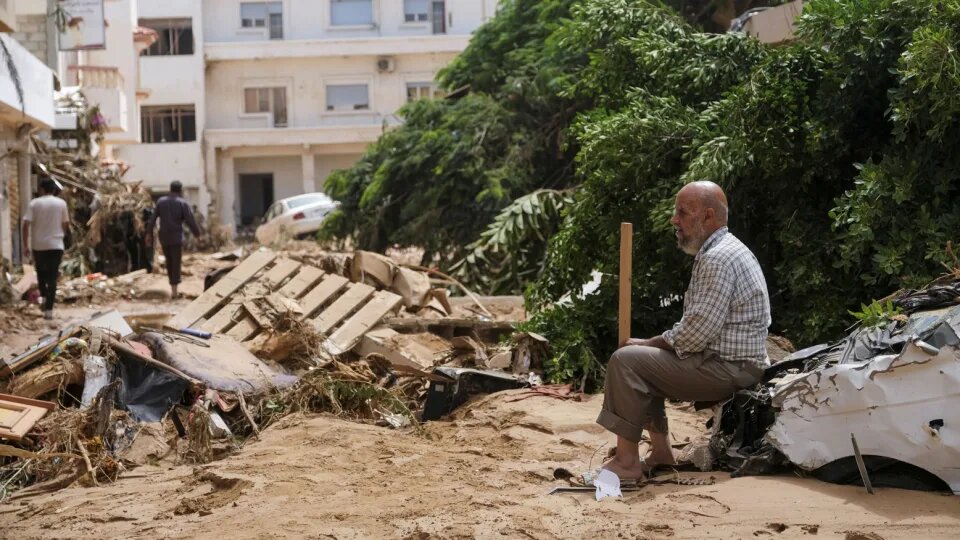As of 14 September, following the flash flood that hit north-eastern Libya and the 6.8 magnitude earthquake that hit Morocco, urgent search and rescue operations are underway in both countries, as numbers presumed to be dead and missing increase. More than 11,300 people have been killed in Libya and at least 2,901 people in Morocco.
Most recently, the United Nations (U.N.) top humanitarian official stated on Friday, September 15, that Libya required equipment to locate people stuck in mud and damaged structures as well as basic medical care to prevent a cholera spread among survivors.
Under-Secretary-General for Humanitarian Affairs and Emergency Relief Coordinator Martin Griffiths stated during a U.N. briefing in Geneva that “priority areas are shelter, food, and key primary medical care due to the worry of cholera and the worry of lack of clean water.”
He added that the U.N. humanitarian office had redeployed a team of 15 disaster coordinating specialists from Morocco, the site of last week’s earthquake, to Libya.
What has happened in Libya so far?
The catastrophic flood events that hit Libya on Wednesday, September 11, have prompted cries for more humanitarian aid, as some of the deceased lie in body bags while others have been buried in mass graves.
“The sea is constantly dumping dozens of bodies,” said Hisham Chkiouat, a minister in Libya’s eastern administration.
Seven EU Member States — Germany, Finland, France, Italy, the Netherlands, Romania, Belgium — have provided assistance since the EU Civil Protection Mechanism was activated on September 12 in the form of an emergency medical team and in-kind assistance; namely shelter, food and non-food items, power generators.
Egypt, the United Arab Emirates, Turkey, Italy, and Algeria are also among the nations that have declared their intent to send humanitarian aid to Libya.
Egyptian president Abdel Fattah Al-Sisi ordered “the establishment of shelter camps” in the border region between the two countries for victims of the disaster in Libya. Al-Sisi also directed the preparation of a Mistral aircraft carrier – one of the country’s Armed Forces assets – to be stationed off the Libyan coast. The aircraft will serve as a field hospital for those afflicted by the disaster in Libya.
In addition to Algeria, Qatar, and Tunisia, the United Arab Emirates dispatched two planes delivering 150 tonnes of supplies. On a Kuwaiti flight, a further 40 tonnes of supplies took off on Wednesday.
Scientists who have investigated the floods pointed out that the Mediterranean Sea’s temperature is substantially above average. They believe that this contributed to the storm’s tremendous rainfall, as ocean temperatures all over the world rise out of control as a result of emissions that contribute to global warming.
The UN has launched a donation campaign to raise USD 10 million (EGP 309 million) to help Libya’s survivors, including the 30,000 or so individuals who, according to the UN, were left homeless in Derna. That equates to approximately a third of the city’s pre-disaster population in eastern Libya.
What has happened in Morocco so far?
Morocco is in the midst of immediate search and rescue efforts following a strong earthquake that struck the Al Haouz area on September 8. More than 2,800 people have died, and a large number more are still missing.
As patients are brought in from the highlands, Marrakesh’s hospitals are becoming overcrowded. Over 2,500 people have suffered severe injuries, the majority of them life-threatening.
Along with mobile and internet service being unavailable, power is out and the water supply has been harmed. Because it is too dangerous to enter buildings again, many are sleeping outside.
In an effort to help nations affected by natural disasters, Libya, Morocco, and Slovenia received aid from Egypt’s Ministry of Religious Endowments totaling EGP 30 million (slightly under USD 1 million).







Comments (0)